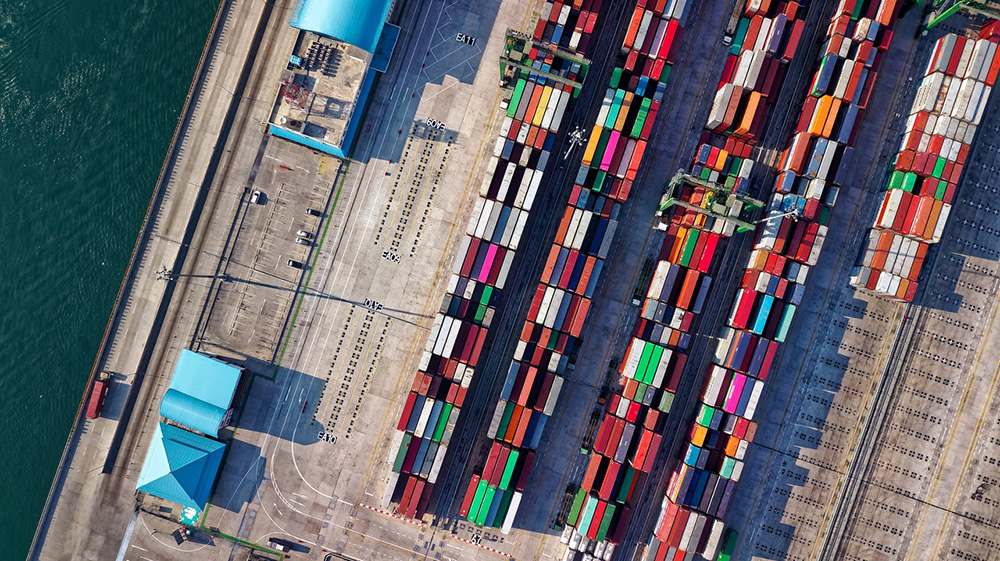Published by Express Pharma
In recent years, India has come to the fore as a major player in the global pharmaceutical market. According to the India Brand Equity Foundation (IBEF), the Indian pharma market is the third largest in the world by volume and 14th largest by value (approximately Rs 1.95 trillion, or $30 billion)i. Today, pharmaceuticals manufactured in India account for approximately 10 per cent of the world’s pharma volume and are exported to more than 200 countriesii, with further growth expected.
While India has taken important first steps in helping to ensure the security of the global pharma supply chain – largely through its leadership in recognising the importance of pharma serialisation and traceability processes – recent international regulatory changes are now having a significant impact on the data, connectivity and technology infrastructure companies must have in place.
With the clocks counting down for pharma companies to not only comply with the EU Falsified Medicines Directive (EU FMD) and US Drug Supply Chain Security Act (US DSCSA) regulations, but also to understand the unwritten rules of supply chain best practice, if Indian pharma firms are to continue to manufacture and export internationally, then they must start taking a hard look at the evolving international serialisation requirements.
Serialisation Law
Serialisation is the process by which products are marked with a standards-based unique identifier— typically a unique number or alphanumeric code—and is the enabling technology for systems and processes to enhance supply chain security.
The regulatory push to secure the pharma supply chain comes as a result of rising drug-related criminal activities and supply chain inefficiencies. Efforts are aimed at addressing drug counterfeits, unauthorised parallel supply chains, improving supply chain visibility, difficulty in tracking returns/ recalls and scarcity of data-driven tools for predicting patient behaviour.
However, serialisation of pharma (i.e., applying the unique identifier to medication packaging) itself provides virtually no benefit to the supply chain. Rather, it is the use of that serialised data in a manner to efficiently realise the goals of the end-to-end system that enhances supply chain security. This complementary use of the serialised data is commonly referred to as ‘traceability’ or ‘track-and-trace.’
India has made great strides toward improved supply chain security through serialisation requirements and the creation of a traceability system, with most manufacturers beginning their serialisation programmes to satisfy the Directorate General of Foreign Trade (DGFT) requirements for export markets, laid out in early 2011.
In 2015, a further draft proposal for domestic drugs was published, but no timelines have been established for the adoption of that set of serialisation, labelling, and reporting regulations.
Latterly, further regulations across the globe have started to take shape.
Passed in 2013, the US DSCSA roadmap for end-to-end traceability is stretched across a period of 10 years, with deliverables outlined for all entities of the supply chain. In the US, lot-level traceability began in January 2015 under the act with package-level serialisation to be completed by November 2018, following an extension granted by the FDA in June 2017. The entire supply chain is expected to be electronically integrated and all nodes of traceability to be established by November 2023.
The European Union (EU) has followed suit with a compliance requirement by enacting Falsified Medicines Directive (FMD). Unit-level serialisation and dispenser authentication has been mandated by February 2019.
India being a major exporter to the US, Europe and other regulated markets, these regulations have a significant impact on Indian pharma manufacturers, and the trend is now clearly visible. The end objective of all the regulations is traceability, where serialisation is acting as the key enabler. Taking a cue from these global proceedings, Indian manufacturers are being urged to review at their serialisation programmes with traceability as a core component of their strategy.
Serialisation in practice
Serialisation and traceability require three key components: an understanding of all products distributed through the supply chain; an understanding of all parties that participate in supply chain; and a mechanism for identifying and ensuring the good standing of all parties that participate in the supply chain.
To achieve this understanding, and then be able to act it, is a significant undertaking. It requires the implementation of processes and software to generate, affix, and capture data related to the unique identifier. It may also require the potential reconfiguring of packaging lines, which in itself takes time to install and validate.
In addition, systems and processes between downstream trading partners, such as wholesalers and pharmacies, must be in place to receive, ship and dispense products. And, particularly in relation to the US market, full traceability requires serialised packages to be aggregated to cases, bundles, pallets, and other logistical units. As its most basic, if the data isn’t in the system, then the product can’t get through the supply chain.
Finally, the systems must be in place for the serialised data to be submitted to the relevant regulators and databases, from DAVA, to the FMD EMVO hub and the FDA in the US. Finding a serialisation partner who is GS1 compliant and registered with the EMVO hub is critical.
Implementing serialisation and traceability
Appreciating the complexity of the regulatory requirements, those organisations embarking on their serialisation and traceability journey should adopt a comprehensive approach to ensure success.
1: Get executive buy-in
Serialisation is a board level issue, with ramifications that could directly affect business performance. It is a business continuity risk that touches every aspect of an organisation. So the first step is to appoint an executive sponsor, ideally with board level oversight, to lead a holistic strategy.
2: Assemble a multi-disciplinary team
Multi-disciplinary engagement is essential. Many organisations don’t understand all their business processes in sufficient detail to overlay serialisation. It’s therefore vital that a multi-disciplinary team (MDT) is convened at the earliest opportunity to map the process flow of the business and establish a roadmap of how serialisation can be applied across multiple organisational boundaries. An MDT should actively engage representatives from manufacturing, supply chain, IT, legal/ regulatory and partner/ contract management.
3: Understand the data implications of FMD
The barcodes required must include 4 lines of data; the unique identifier or Global Trade Item Number (GTIN), serial number, batch number and expiry date. These datasets often live in disparate systems within organisations. The master data – including GTINs – is fixed information that’s commonly stored in an enterprise resource planning (ERP) system.
Having said that, many Indian pharma companies, whilst serialising, currently may not be applying numbers that are internationally compliant. Today’s serialisation and traceability requirements demand that organisations are registered with the global standards authority GS1. As part of the GS1 registration process, organisations are effectively buying the licence to use the intellectual property known as the GS1 identifiers (GTINs) to globally identify your company and products and converse with other companies. around the globe.
Even with the relevant licences and identifiers in place, the master data still requires attention to ensure it’s clean and accurate when uploaded to the repositories. In terms of variable data, the processes required to generate serial numbers, transfer them to production and ensure they’re used appropriately are complex. Managing that immensity of numbers throughout the supply chain lifecycle is hugely important; mistakes can lead to expensive delays, medicines shortages and loss of revenue. Serialisation software is therefore an essential requirement to help you maintain control of all aspects of fixed and variable data.
4: Choose the right software
There are numerous factors to consider when selecting software:
Quality
Serialisation should not be divorced from the founding principle of Good Manufacturing Practice (GMP) – quality. GMP guidelines, as well as data integrity advice from regulators such as the UK MHRA, state that users of computer systems must always be in control. However, multi-tenant serialisation solutions (where multiple independent entities share the same instance of a software solution) can sometimes impose software updates without prior dialogue, leaving users out of control. The potential impact on quality is significant. Passive acceptance of change is not an option. Multi-tenant solutions require license-holding companies to ensure that risk assessment processes are in place to monitor and adapt to change. By contrast, the most effective solutions allow users to maintain control of their specific software instance and to dictate the timing, relevance and nature of upgrades.
Data validation
An effective solution will focus on both connectivity and data integrity. Some systems concentrate on enabling a connection and flow of data across and between organisations but are blind to data quality. Companies should never assume that the data entering, or generated within, their systems is clean, tidy and accurate. Internal data checks are essential. The best solutions routinely monitor data to detect human error, inaccuracy and duplication. Smart solution providers validate data flowing through a system – in some cases up to 70 data validation checks on incoming records to ensure its integrity – essentially preventing bad data entering the EU or DAVA hubs.
Network connectivity
It’s not enough to ensure your own business is ready: your partners must be ready too. With outsourcing now common across the industry, it’s important that the software you use connects all parties to a single version of the truth. The most effective solution providers understand the varied nature of the connections you are going to have to make and will commit to connecting your entire partner network as standard. This means more than just having a potential connection – it means working with you and your partners to make sure that data really flows end-to-end across the supply chain.
5: Choose the right partner
Finally, it’s important to find a vendor that can partner with you to design responsive solutions that go beyond technology. As stated above, certification of your vendor by the European Medicines Verification Organization (EMVO) is a pre-requisite if you want to be compliant.
In addition, a partner should be a recognised provider with experience, credibility and evidence that shows it can implement effectively within tight timeframes, including a “follow the sun” implementation model, operating across a number of time zones to ensure that time zone issues don’t become your stumbling block.
A good partner will be committed to your success, keeping you abreast of fluctuating global regulations, and collaborating with you to customise solutions that adapt to changes in your business and the wider market place.
Conclusion
Serialisation and traceability are significant undertakings, but compliance to international regulations and understanding of supply chain best practice are vital to the continued growth and success of the Indian pharma market. Investing in a trusted partner, who understands all the nuances of the international landscape and has the relevant registrations, resources, technology and processes in place, can help you successfully navigate hitherto uncharted territory.
The serialisation standards by FMD will impact all corners of the pharmaceutical industry. Choose a partner wisely to ensure they have the expertise and experience to assist you on your journey.
To learn more about Supply Chain Visibility click here.
To learn more about Regulatory Compliance Software click here.
References:
1. India Department of Pharmaceuticals, Indian Pharmaceutical Industry—A Global Industry, available at: http://pharmaceuticals.gov.in/pharma-industry-promotion.
2. Indian Brand Equity Foundation, India Pharmaceutical Industry.



